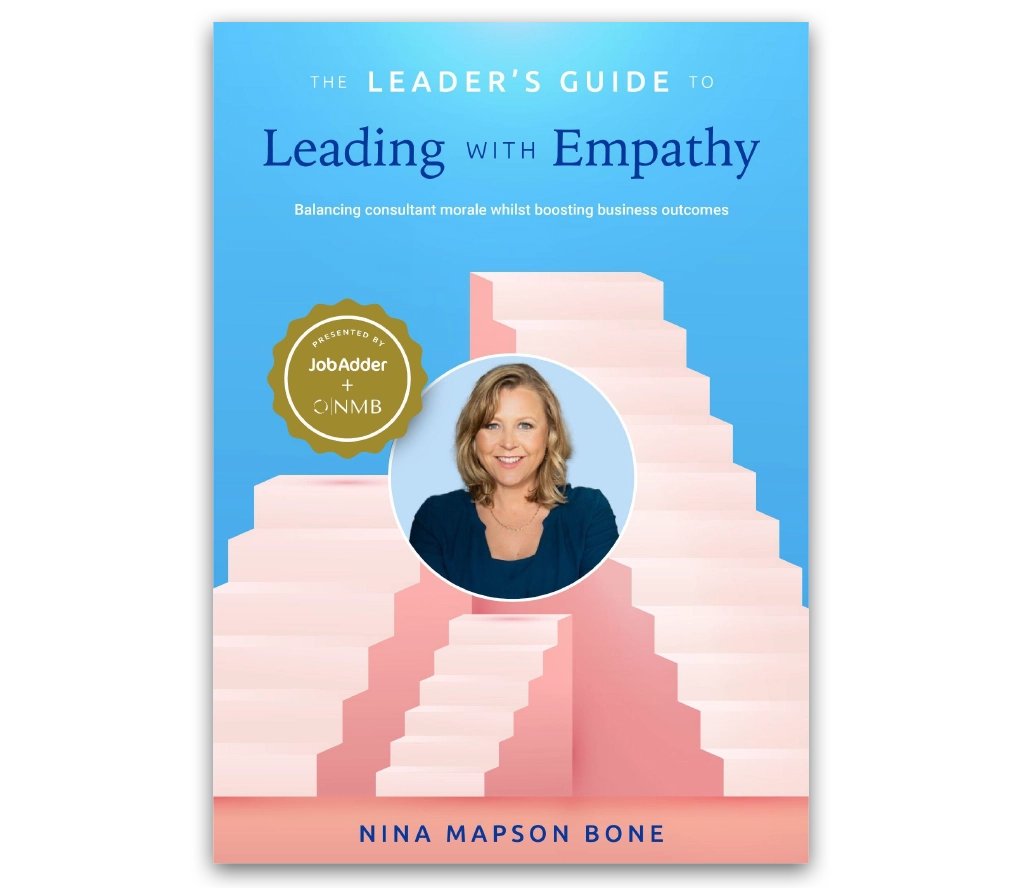Recruitment Blog
Building a 5-day KPI model for the 4-day work week

By Nina Mapson Bone
Recruitment KPIs
In over a quarter of a century of working in recruitment, I’ve worked in two listed, one boutique and one medium-sized agency firm as well as one stint in internal recruitment. During that time, I’ve had the complete experience of setting and managing KPIs, from the non-negotiable through to what I’ll term, ‘choose your own adventure’. Like any business practice, there are pros and cons of the different ways of implementing this, each resulting in differing behaviours.
In 2019, when I was managing director at Beaumont People, we went through a process of implementing the Four Day Week. The core objective was simple. Team members who were on a full-time five-day-a-week contract could continue to get paid for five days whilst working only four, as long as they qualified each month. To make this successful it was imperative that we had a very clear view on what five-day productivity looked like. This started us on a journey with our KPIs that fundamentally shifted the way we measured and viewed them.
Beaumont People’s Journey to the Four-Day Week
Nikki Beaumont, Founder and CEO of Beaumont People first came across the four-day week when she heard Andrew Barnes, the pioneer of the concept, speak at a conference. She came back from that event full of enthusiasm, aware of the benefits for both individuals and businesses, and concerned about the risk of burnout that some of our high performers may have been facing in Beaumont People. Initially, I rejected the idea because I felt that the timing wasn’t right with other initiatives we were tackling in the business.
While this was happening, Beaumont People had also been conducting its’ world-first research into meaningful work. Within that research, it was discovered that in the previous academic studies “hours that allow for free time and rest” had been highlighted as a factor of meaningful work. Simultaneously, the rise of the four-day work week was showing benefits for both workers and organisations alike, including 71% reduced burnout, 65% reduction in sick days and a 57% reduction in staff turnover, according to Swinburne University.
The second time Nikki raised it with me, she got a qualified yes. I still had some scepticism, but we decided the time was right to explore it. However, I had a lot of questions. How would we maintain our 7:30 am-5:30 pm five days a week schedule? Could there be potential entitlement issues? Would our service quality and compliance metrics falter? What about clients and jobseekers, would they go elsewhere? Not to forget the existing four-day week employees when we hadn’t budgeted for a 20% salary surge. Eventually, we agreed that a trial was the best way to test it and to trust our people to devise the solutions.
Communicating Internally
Step one was to communicate it to our executive leadership team, a key group of six. Their responses were incredibly diverse from excited to cynical, which we hadn’t anticipated. It was good preparation for a wider rollout.
We unveiled the plan at our annual conference in August 2019, to an equally broad spectrum of reactions. Leveraging the de Bono groups’ six thinking hats methodology, we workshopped different aspects: the facts needed, the potential positives, the risks and problems, the feelings and intuitions, the creative solutions and the thinking process required. This gave us some preliminary thoughts to consider. It also made us realise there was much work to be done before we were ready to implement the concept.
Subsequently, we extended an invite to any interested employees, at any level, to join a working group to delve into the specifics, with the objective of creating a recommendation to our executive leadership for implementation. Whilst I chaired that group, my job was only to facilitate the conversation and provide feedback on their procedural approach. We had a significant number of employees join that working group.
Productivity Guidelines by Role
After a bout of over-engineering solutions, the team arrived at a breakthrough: productivity guidelines categorised by role type. Under this model, if you met your productivity guidelines in month one, you had access to your four-day week in month two, but then if you lapsed, you lost it in the following month.
Therefore, it was crucial to outline precise measurable outcomes necessary to qualify for the four-day work week. Encompassing all our role types, these benchmarks spanned from the receptionist through to myself, as managing director. It was agreed that these standards should be set at a level higher than mere acceptability but beneath our top-performer tiers.
Next came the debate around the specific nature of these guidelines. They couldn’t be solely financial metrics, as not all positions generate revenue, and they needed to embrace aspects like service quality and compliance. They needed to meet the definition of a SMART goal, and needed to be as simple as possible for leaders and team members alike to discuss and agree, without debate each month, whether the productivity guideline had been met.
Within the working group, we had a diverse mix of employees, of all different job types. We had senior and junior people in the group, we had revenue generators and operations. The discussion around what levels the productivity guidelines should sit at was respectful but robust. Understandably, no one wanted their personal guidelines set too high, but it was also important that the standards of the business as a whole, were maintained. That made for some healthy discussion!
From the outset, these were referred to as productivity guidelines. The intent was how we would maintain the five-day a week productivity. It never occurred to anyone that what we were actually doing was outlining a really clear definition of KPIs, in a way that we had never discussed as a whole business before. Had we referred to them as KPIs I suspect it may have changed the whole tone of the conversation. We always maintained a focus on the outcomes we were looking for; and the inputs that were needed to lead to those outcomes. This is what kept relating the conversation back to productivity. It was this focus that helped to keep the conversation respectful and healthy.
A series of workshops led to the final guideline framework, also providing clarity on the increased effort required for any part-timers requesting to transition to full-time to participate.
Rollout & Effectiveness
In January 2020, Beaumont People announced the launch of a four-month trial commencing on February 1st. Employees post probation and already meeting the productivity guidelines became eligible. Assessed monthly, those failing to meet their productivity guidelines would lose their four-day week privilege the following month, regaining it any month after meeting the guidelines again.
Initially, it was a great success, but the Covid pandemic halted the trial for six months before it was resumed in late 2020. The four-day work week has been in place consistently ever since.
Like anything, it was not perfect, and there are learnings to be taken from the experience, but overall it has been a resounding success for Beaumont People. Measuring output instead of hours has been good for the team, but also good for leaders. The team are now steadfast in their desire to maintain their performance even as the market conditions have changed. It improved business performance – Beaumont People experienced the reported benefits of reduced burnout and sick days. It was also a powerful tool for employee value proposition, during a time of extreme talent shortage.
Reflecting on the process, it was challenging to solve how we would implement it, but the concept of productivity guidelines opened more doors to meaningful work for all involved.
To discover the 7 tips to Leading with Empathy, check out the Leader’s Guide.

About Nina
Author of ‘Meaningful Work: Unlock Your Unique Path to Career Fulfilment’, Nina Mapson Bone is a people strategist, consultant, chair and keynote speaker. She consults with boards, CEOs, founders and executives on bridging the disconnect between strategy and the needs, motivations and capabilities of their people.
Nina’s executive career has spanned three continents and diverse sectors. She was previously the Managing Director of Beaumont People, where she led a period of significant growth for the organization, during which it was recognized with multiple awards. For more information visit www.ninamapsonbone.com.au
The Leaders Guide to Leading With Empathy
By Nina Mapon Bone

Related blog posts

Work-life balance is about to become a protected right in Australia with the introduction of the right to disconnect. It …
Ready to get started?
Talk to one of our friendly team members


